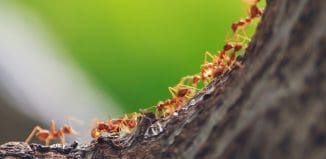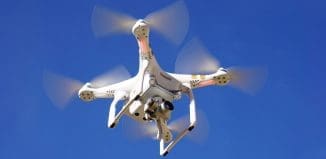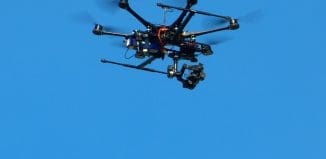“Bugs” to Assist First Responders
This post is also available in:  עברית (Hebrew)
עברית (Hebrew)
An original technology allows the use of unmanned aerial vehicles (UAVs) and insect cyborgs, or biobots, to map large and unsafe zones, like cities shortly after an earthquake. This combination of software and hardware has been developed by researchers at North Carolina State University.
“The idea would be to release a swarm of sensor-equipped biobots into a collapsed building or other dangerous, unmapped area,” Edgar Lobaton, an assistant professor of electrical and computer engineering at NC State and co-author of two papers describing the work, told eurekalert.org.
Once the program receives enough data to map the defined area, the UAV moves forward to hover over an adjacent, unexplored section. The biobots move with it, and the mapping process is repeated. The software program connects the findings to a previous, existing map. This can be repeated until the entire region or structure has been mapped; that map could then be used by first responders or other authorities.
The biobots would be allowed to move freely within a defined area and would signal researchers via radio waves whenever they got close to each other. Custom software would then use an algorithm to translate the biobot sensor data into a rough map of the unknown environment.
“This has utility for areas where GPS can’t be used,” Lobaton says. “A strong radio signal from the UAV could penetrate to a certain extent into a collapsed building, keeping the biobot swarm contained. And as long as we can get a signal from any part of the swarm, we are able to retrieve data on what the rest of the swarm is doing. Based on our experimental data, we know you’re going to lose track of a few individuals, but that shouldn’t prevent you from collecting enough data for mapping.”
“We had previously developed proof-of-concept software that allowed us to map small areas with biobots, but this work allows us to map much larger areas and to stitch those maps together into a comprehensive overview,” Lobaton says. “It would be of much more practical use for helping to locate survivors after a disaster, finding a safe way to reach survivors, or for helping responders determine how structurally safe a building may be”.




























